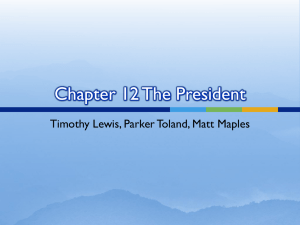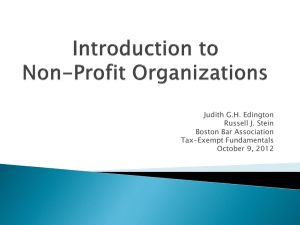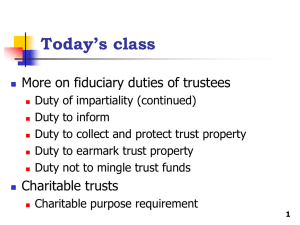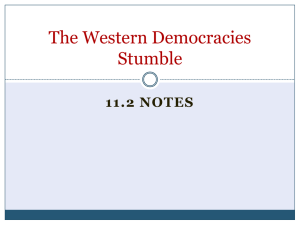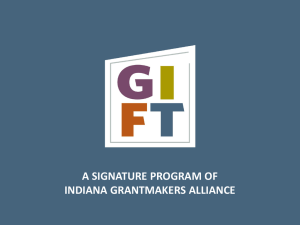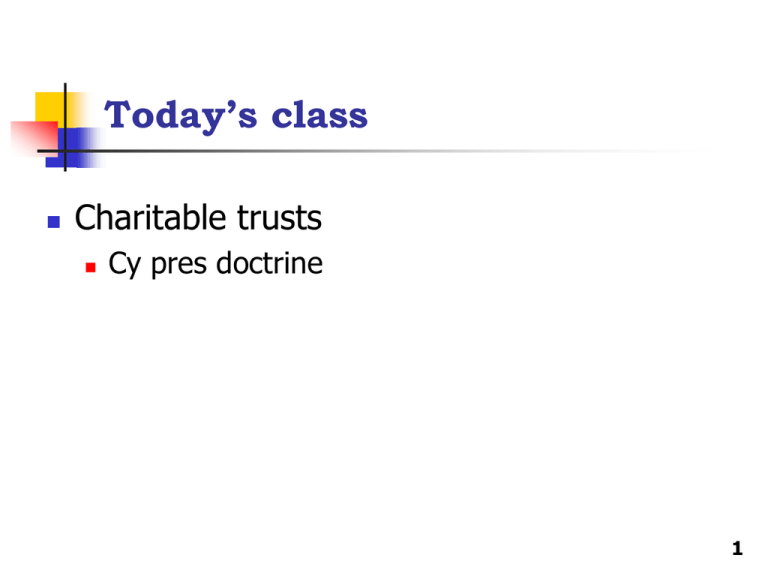
Today’s class
Charitable trusts
Cy pres doctrine
1
Cy pres doctrine
Charitable trusts may have purposes that become
impractical, impossible, or illegal, especially since
they can have a perpetual existence and their
original purpose can become obsolete
The casebook gives the example of a trust to care for
horses retired from pulling fire wagons and streetcars
Accordingly, the common law developed the cy pres
doctrine to allow for modification of a trust. The court
invoking the doctrine is supposed to identify another
charitable purpose that approximates the settlor’s intent
(e.g., other retired animals?)
2
Cy pres doctrine
Note the tension here. If the settlor’s original intent
cannot be carried out, would the settlor prefer that
the trust fail and the corpus revert back to the
estate, or would the settlor prefer that the trust be
modified?
Hence, cy pres requires that the settlor have had a
general charitable purpose
Cy pres makes sense not only because charitable trusts
can have a perpetual existence (no rule against
perpetuities) but also because they enjoy tax-exempt
status (why subsidize an impractical activity?)
3
In re Neher
18 N.E.2d 625 (N.Y. 1939), p. 761
What were the facts?
[M]y home in Red Hook Village … to the
incorporated Village of Red Hook, as a memorial
to the memory of my beloved husband, Herbert
Neher, with the direction to said Village that said
property be used as a hospital to be known as
“Herbert Neher Memorial Hospital.”
1) Was there a charitable purpose?
2) Did testator have a general or specific charitable intent?
3) If the testator had a general charitable intent, what
alternative charitable purposes would be consistent with
that intent?
4
Neher
The court reasonably concluded that Neher had
a general charitable intent, but did it fairly
identify an alternative use of the trust?
Courts do not hold the trustees to a purpose that
approximates the settlor’s intent “as nearly as
possible.” Rather, per the UTC, the goal is to find a
purpose consistent with the settlor’s charitable
purpose (note 1, page 762).
But why not use the money for an outpatient clinic?
If the only options were the hospital or the town hall,
then the court probably got it right. But note the selfdealing problem here.
5
Expansion of cy pres, p. 763
Presumption of general charitable intent:
Party opposing cy pres must show donor lacked
general charitable intent.
Courts sometimes will invoke cy pres for a primary
gift even when an alternative gift is provided
(especially when the alternative gift is not charitable
or when the alternative gift would need modification
as well, but even when the alternative charitable
purpose could be fulfilled)
E.g., when settlor’s primary gift was for a hospital and
secondary gift for a university, cy pres might be applied
to use the funds for outpatient medical care
6
University boilerplate
If in the opinion of the Board of Trustees of the
University, it eventually becomes impossible,
impracticable, or inadvisable to use the expendable
income from the Fund for the purposes described in
Paragraph XX, the Board of Trustees may in its sole
discretion apply the income to such other University
purpose or purposes as will most nearly accomplish
my intention and at the same time permit
appropriate and continuing recognition of the
commemorative character of this gift.
7
Expansion of cy pres, p. 763
“Wasteful” as basis for cy pres:
Cy pres allowed if stated charitable purpose
becomes “unlawful, impracticable, impossible to
achieve, or wasteful.”
Uniform Trust Code
Restatement (Third) of Trusts
8
San Francisco Chronicle:
The Buck Trust, p. 765
Beryl Buck devises her estate
in trust to the San Francisco
Foundation (SFF), for the
needy in Marin County, CA
and for other charitable
purposes in the county.
SFF seeks judicial
authorization to spend
trust income also in
the four other counties
in the SF Bay Area.
Marin Community
Foundation has
$1.1B in assets
and distributed
$51.6M in grants.
1987
1975
Trust corpus grows
from $9M to $260M,
and then to $300M.
1984
2006
SFF resigns as trustee. Court dismisses
case and orders creation of Marin
Community Foundation to act as trustee.
1) Which was more important, SFF as trustee or the Marin County limit?
2) What result if “wasteful” was a recognized grounds for cy pres?
9
Buck trust
Removal of the Foundation as trustee resulted in a
trust that was not of Mrs. Buck’s making. She chose
an experienced, independent, private trustee to
administer her charity. The court replaced it with
publicly-supervised trustees, beholden to Marin
politicians, existing charitable agencies, and her
husband’s relatives. Would Mrs. Buck have wanted
these persons to have a hand in running her trust?
The court rejected inefficiency as a ground for cy pres, but
if waste had been a ground, then the court could have
allowed the requested modification (note 1, p. 768)
Note also that with expansion of equitable deviation to
include dispositive terms, that doctrine could be used in
cases like this instead of cy pres (pp. 768-769)
10
Philadelphia Story:
The Barnes Foundation, p. 769
Barnes Foundation
established as an
educational institution,
curriculum to consist of
Barnes’s unconventional
theories on art.
1951
State AG sues,
Gallery required to
extend hours to
keep charitable
tax-exempt status.
In a series of lawsuits, new
trustees seek authorization
for deviation from bylaws.
Results in extended hours;
investment discretion; and
world tour to raise funds.
2002
1988
1961
Barnes dies. Bylaws set in stone:
Paintings not to be moved,
altered, or sold;
Gallery to have limited operating
hours and no entrance fees;
Trustees to invest only in
government bonds.
Control of
Foundation passes
to Lincoln University,
which struggles
financially to keep
Gallery open.
1990s
Trustees seek
judicial authorization
to move collection to
Philadelphia. After
showing necessity,
court approves.
11
Barnes Foundation Gallery, p. 770
Top:
Seurat, Models.
Bottom:
Cézanne, Card Players and Girl.
Upper left:
Cézanne, The Drinker.
Lower left:
Cézanne, Still Life with Bottle.
Upper right:
Corot, Woman in Gray.
Lower right:
Cézanne, Leda and the Swan.
Photograph reproduced with the
permission of The Barnes Foundation.
All Rights Reserved
12
Discriminatory trusts
As the note on pages 774-776 indicates,
courts usually strike down discriminatory
provisions in trusts (e.g., scholarships based
on race, gender or religion)
But there are ways to create valid
discriminatory trusts (e.g., scholarships for
students attending Wellesley College, Wabash
College, or Morehouse College)
13
Charitable purpose, p. 751
Charitable purposes include:
(a) the relief of poverty;
(b) the advancement of knowledge or education;
(c) the advancement of religion;
(d) the promotion of health;
(e) governmental or municipal purposes; and
(f) other purposes that are beneficial to the community.
Restatement (Third) of Trusts §28 (2003)
14





